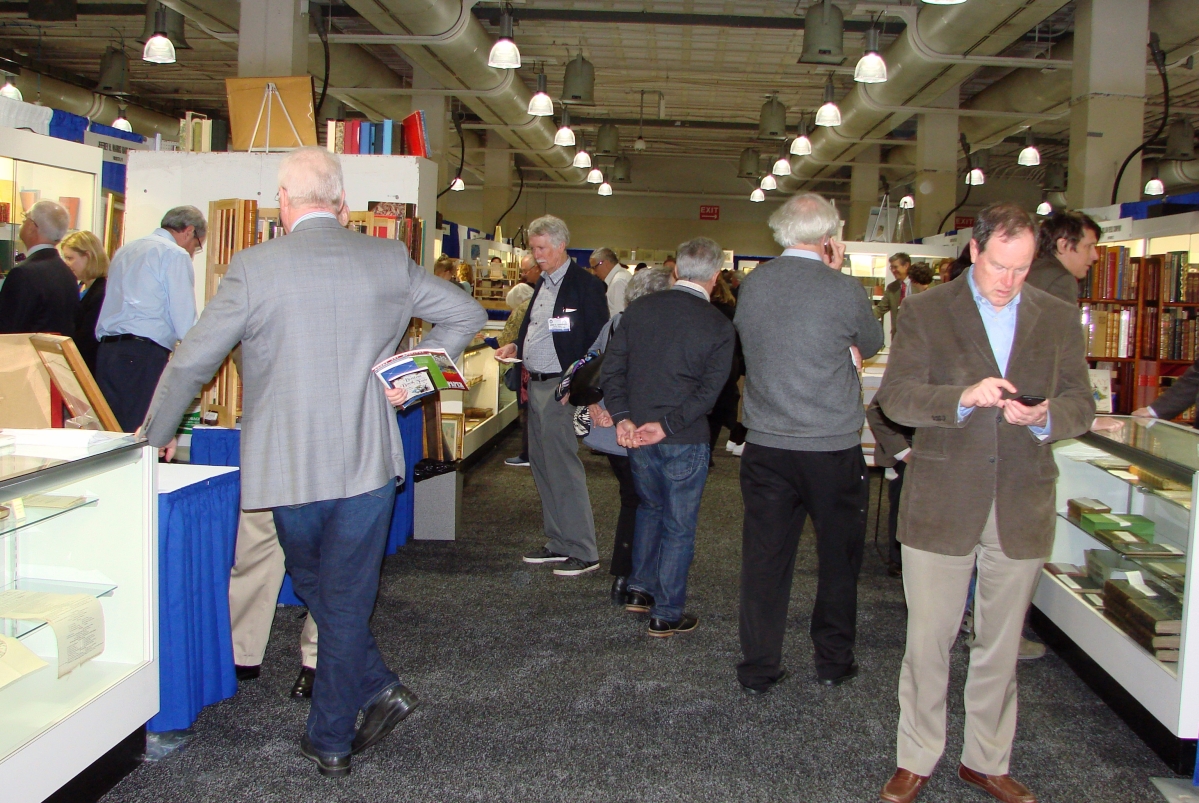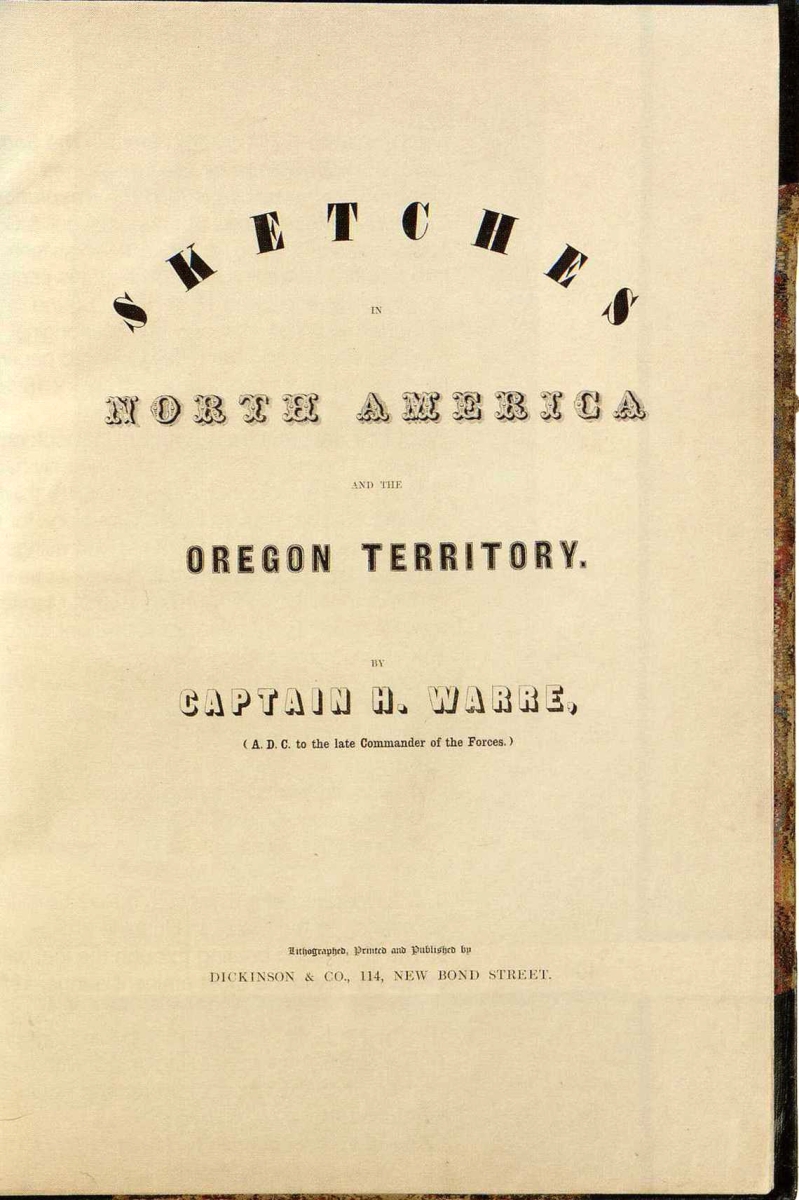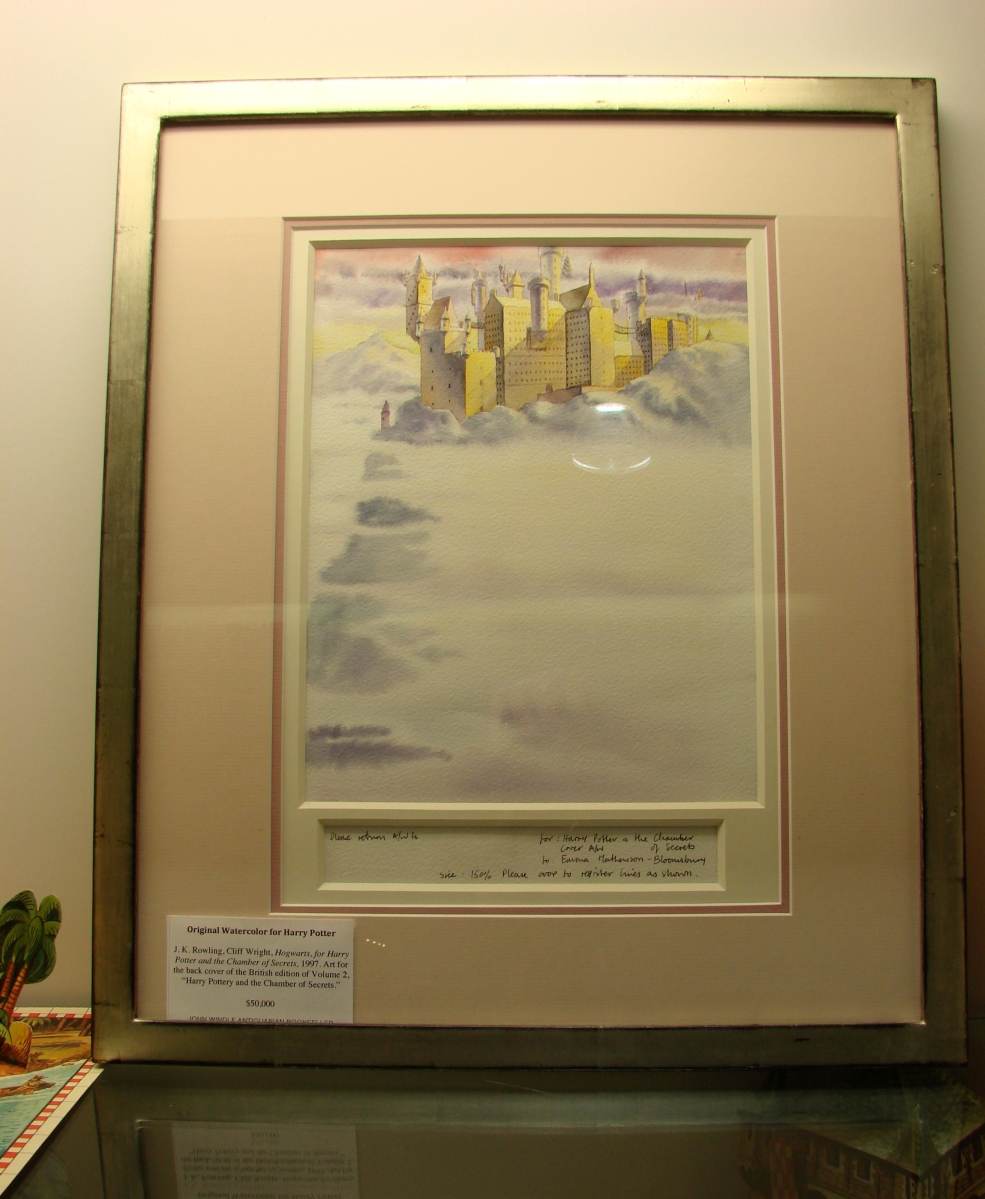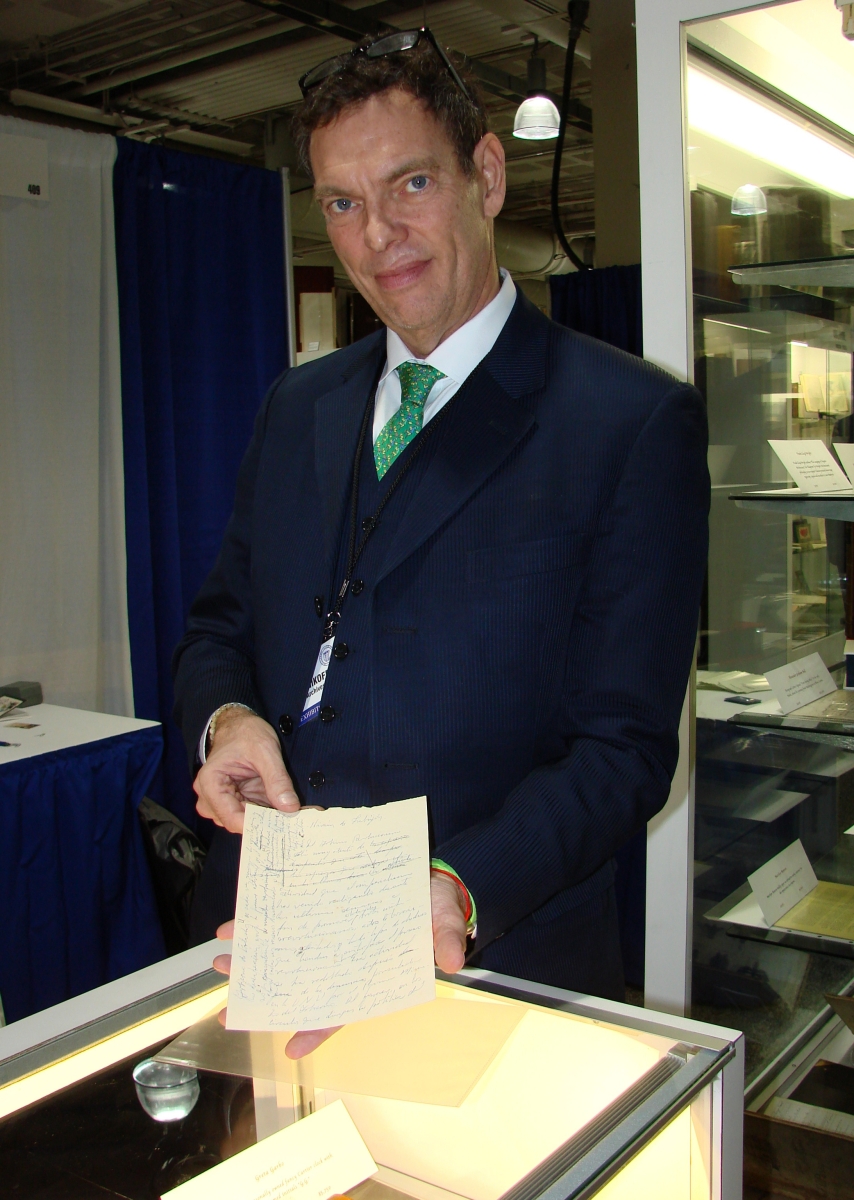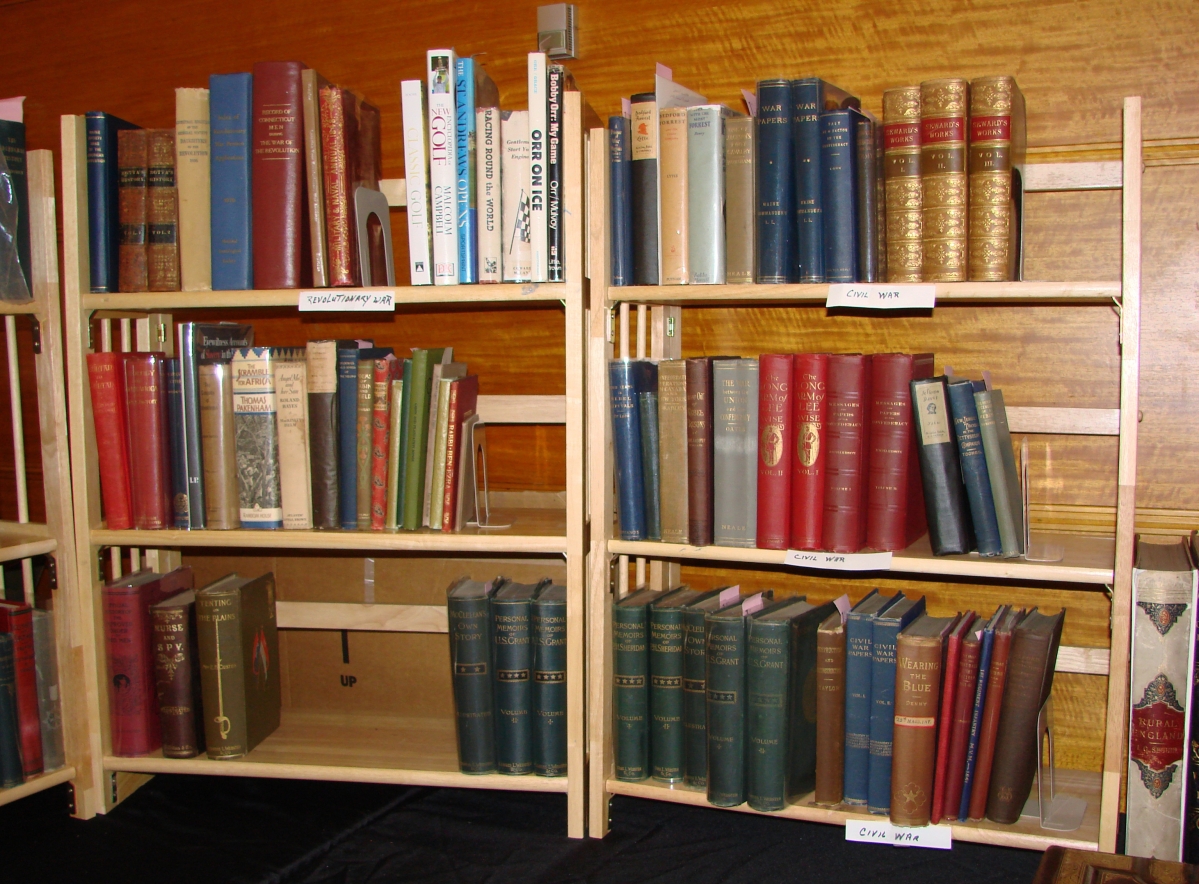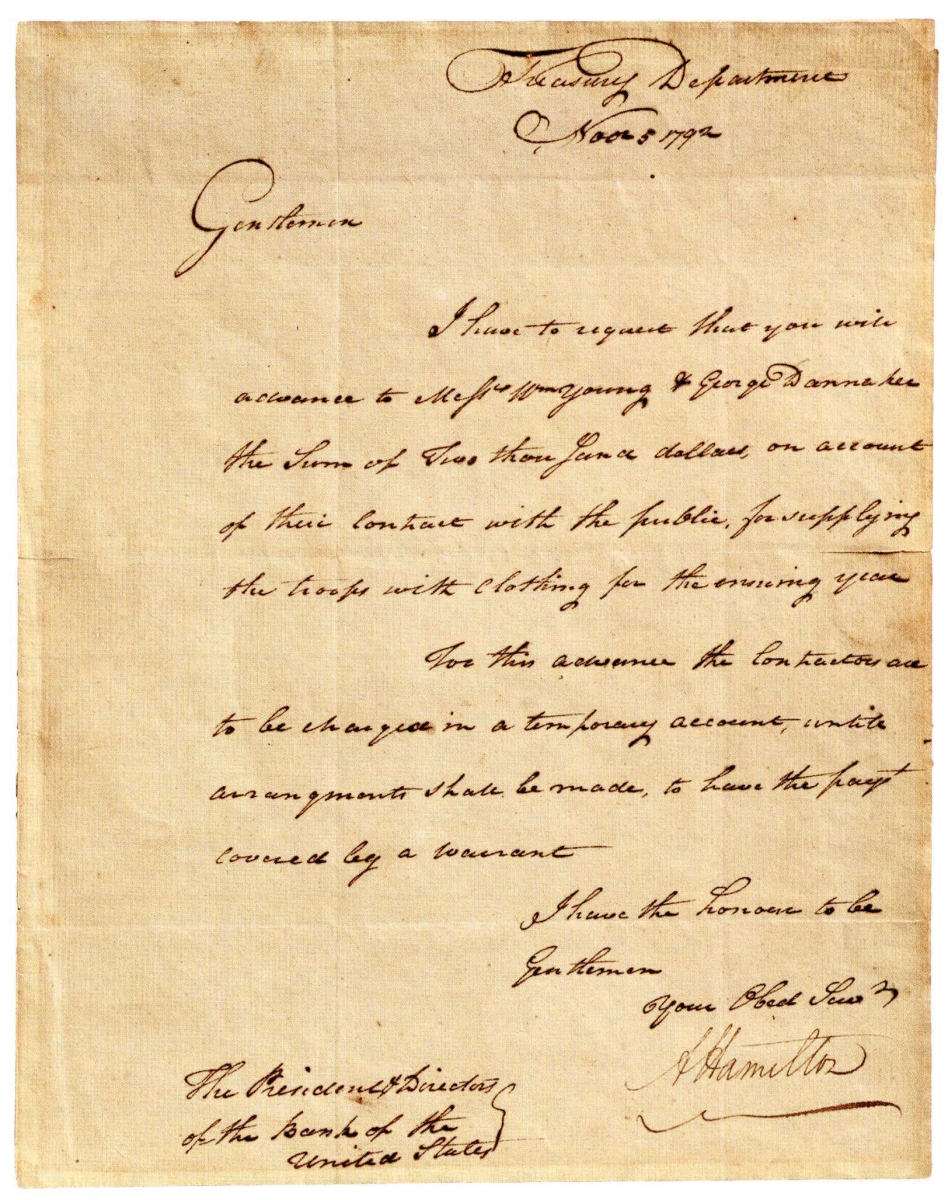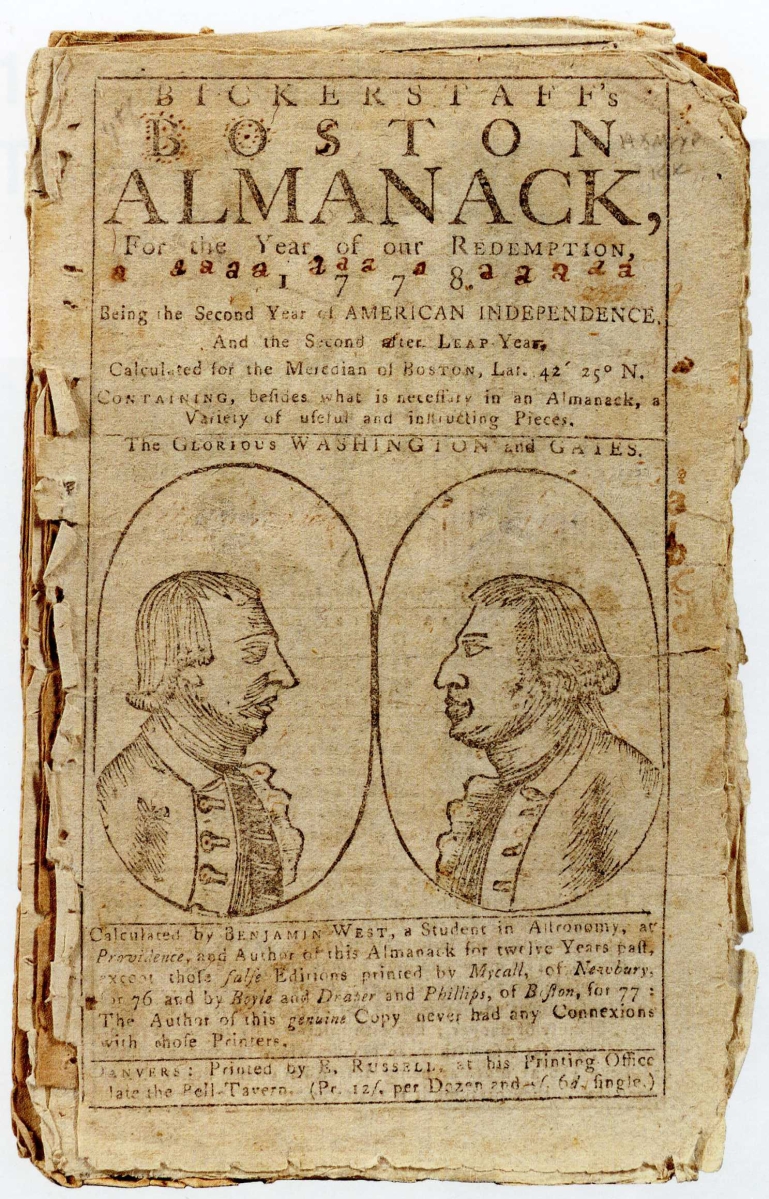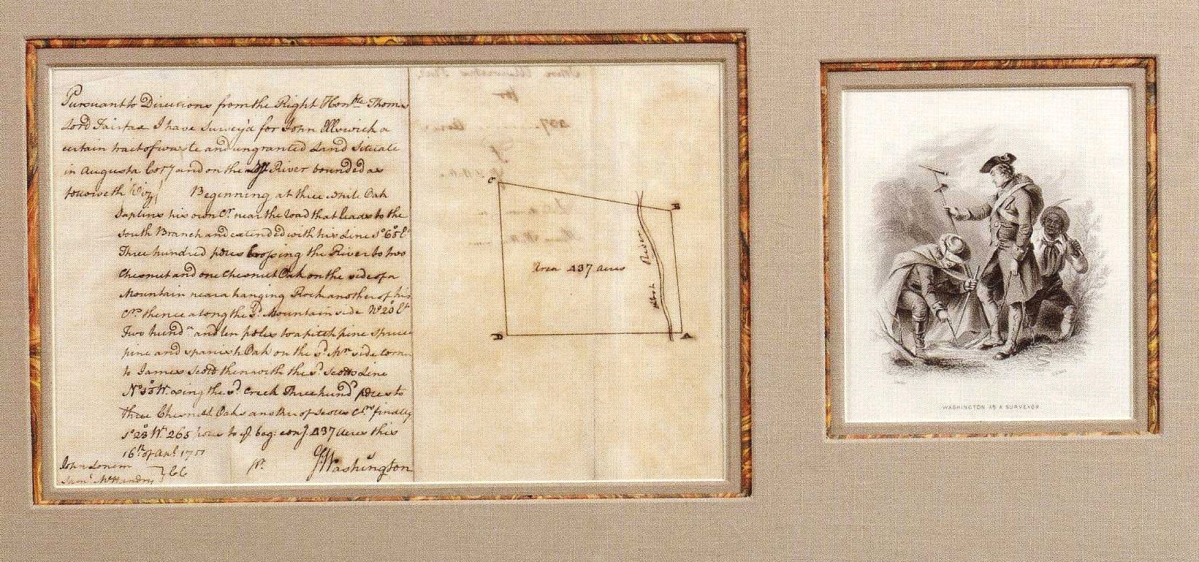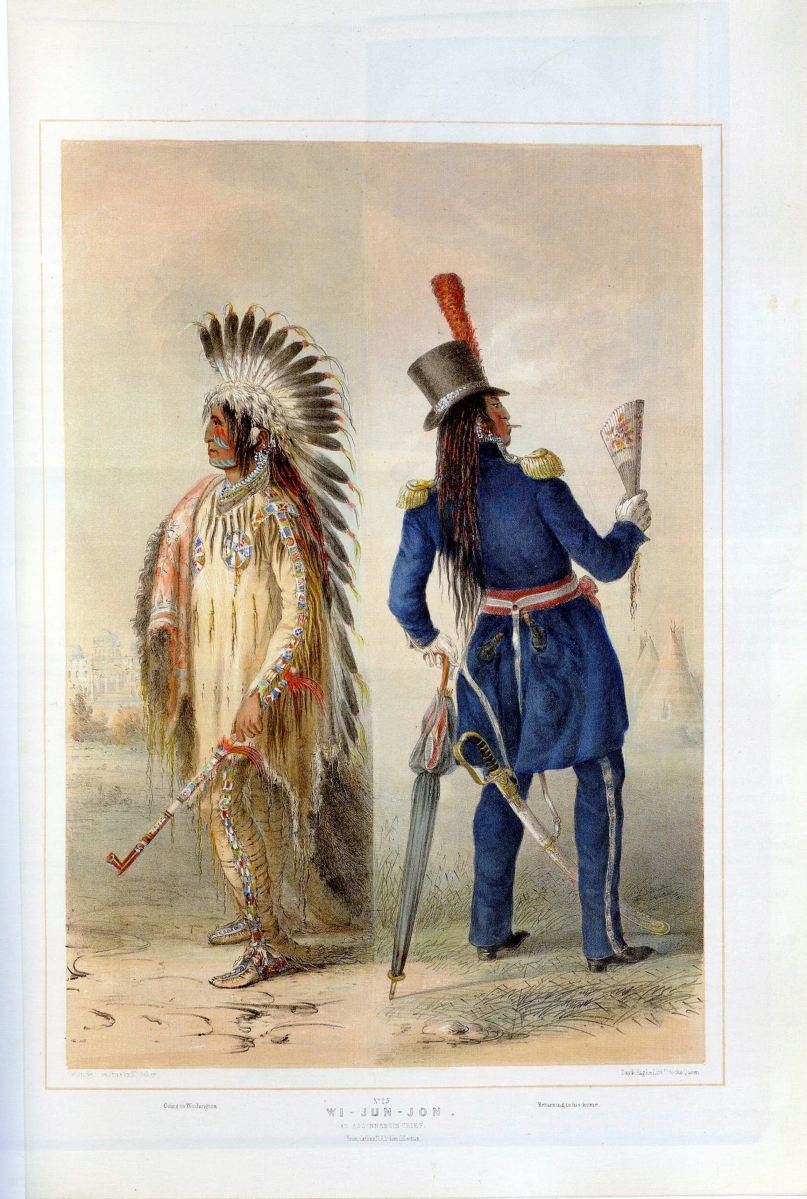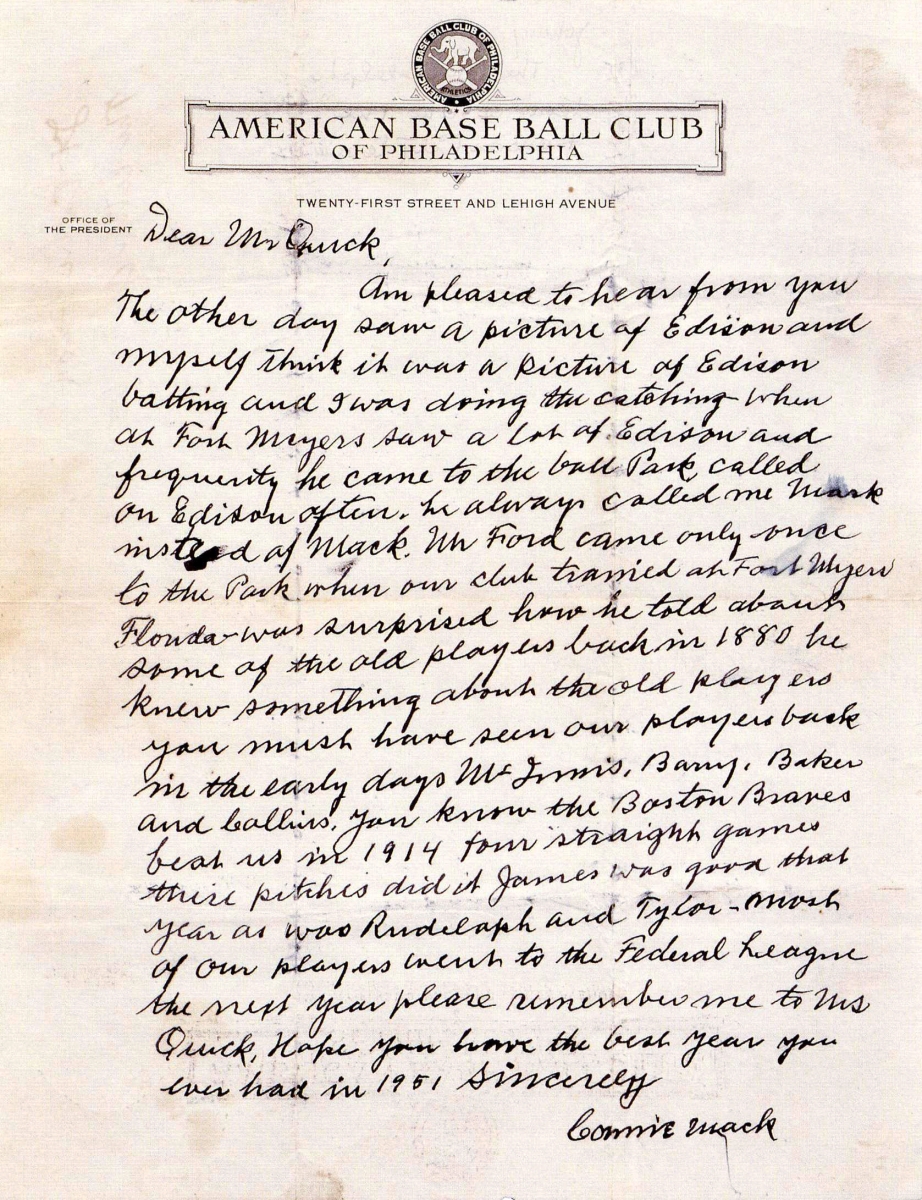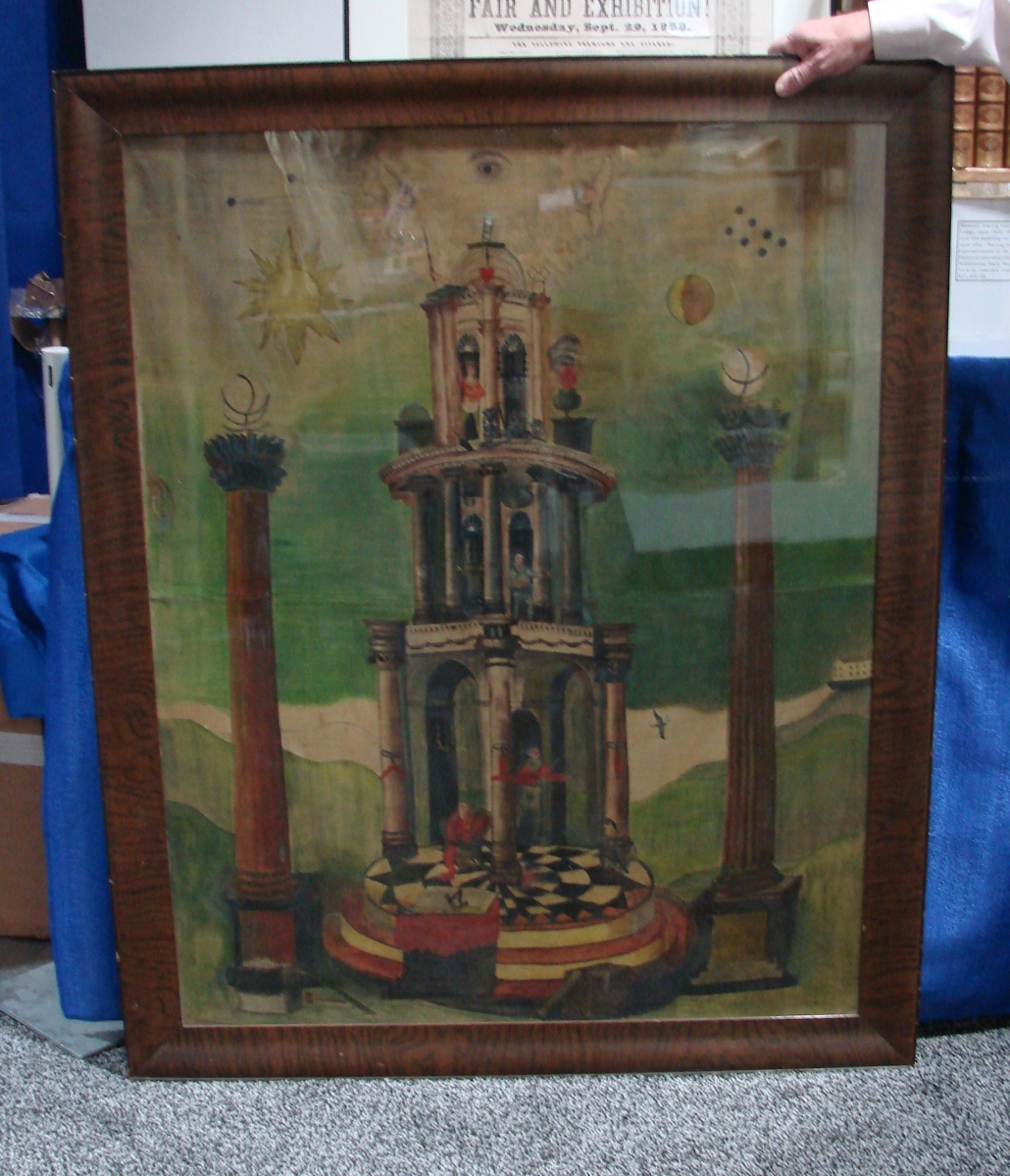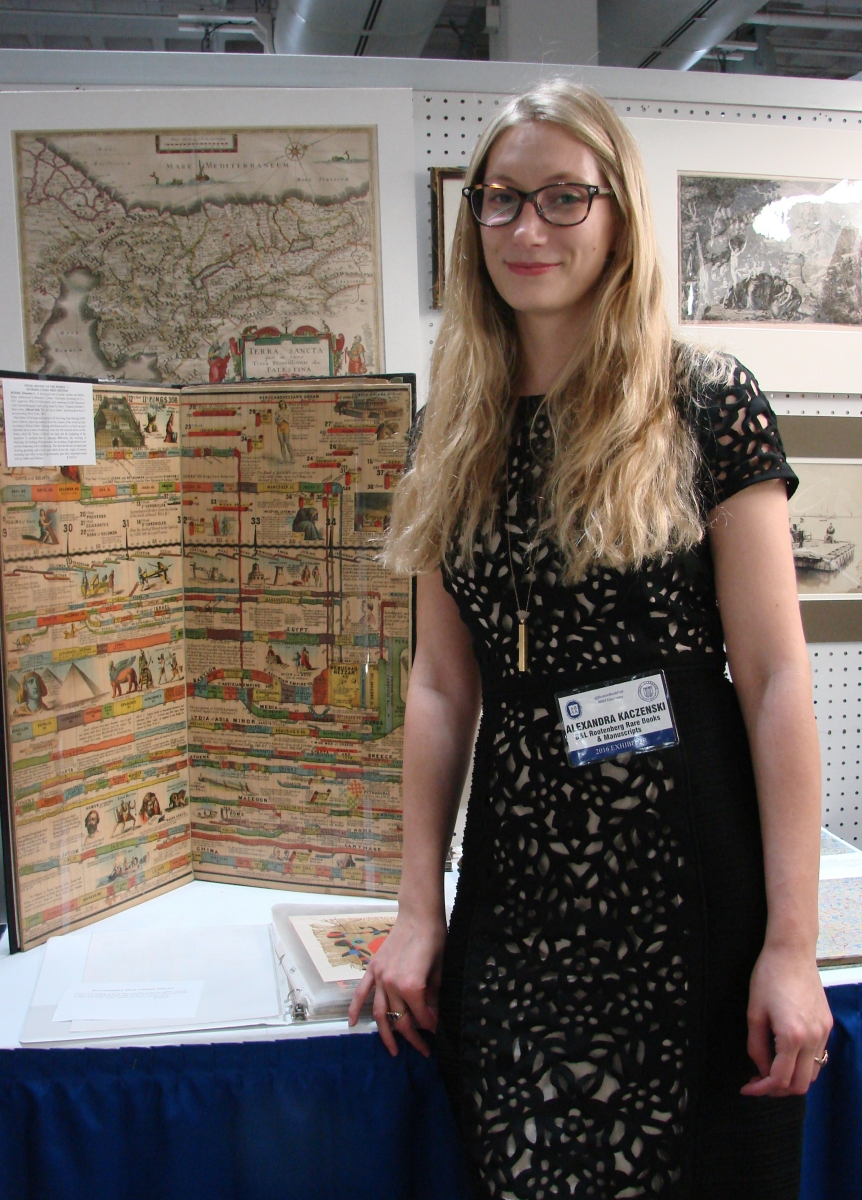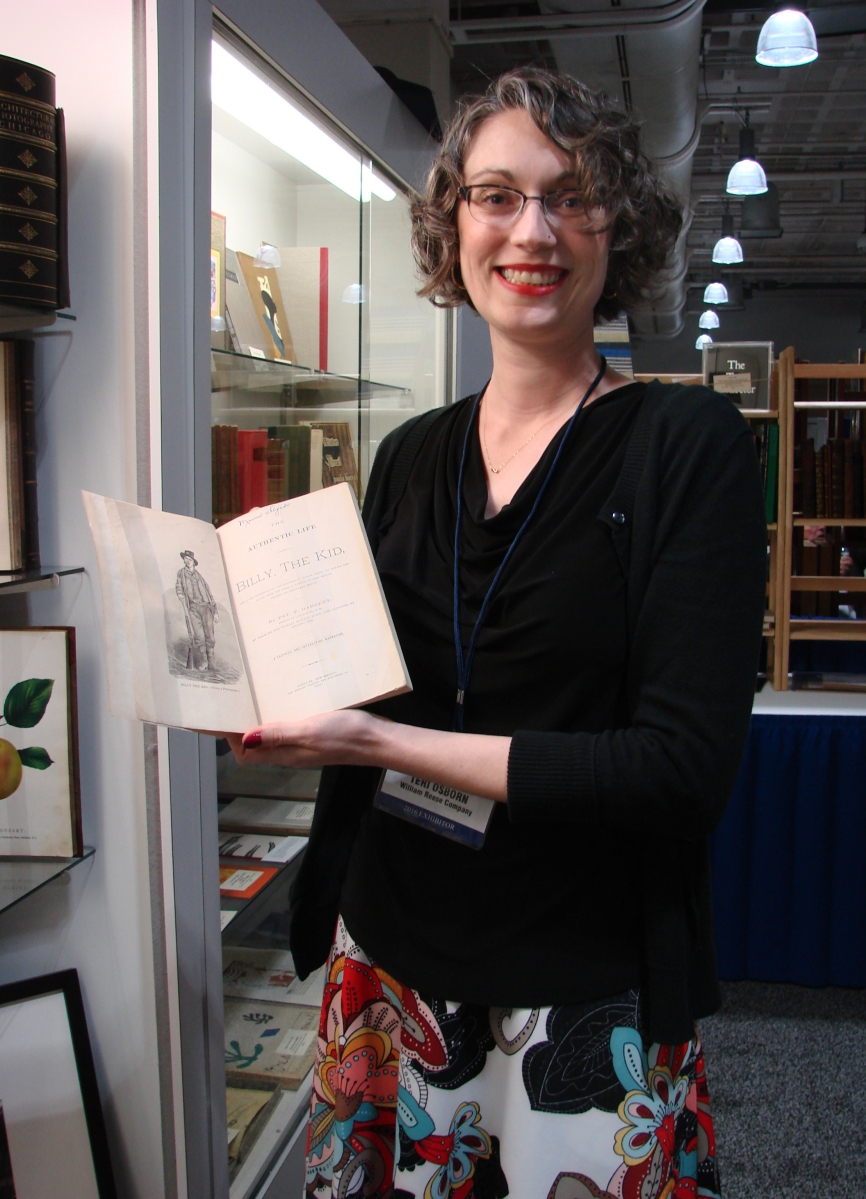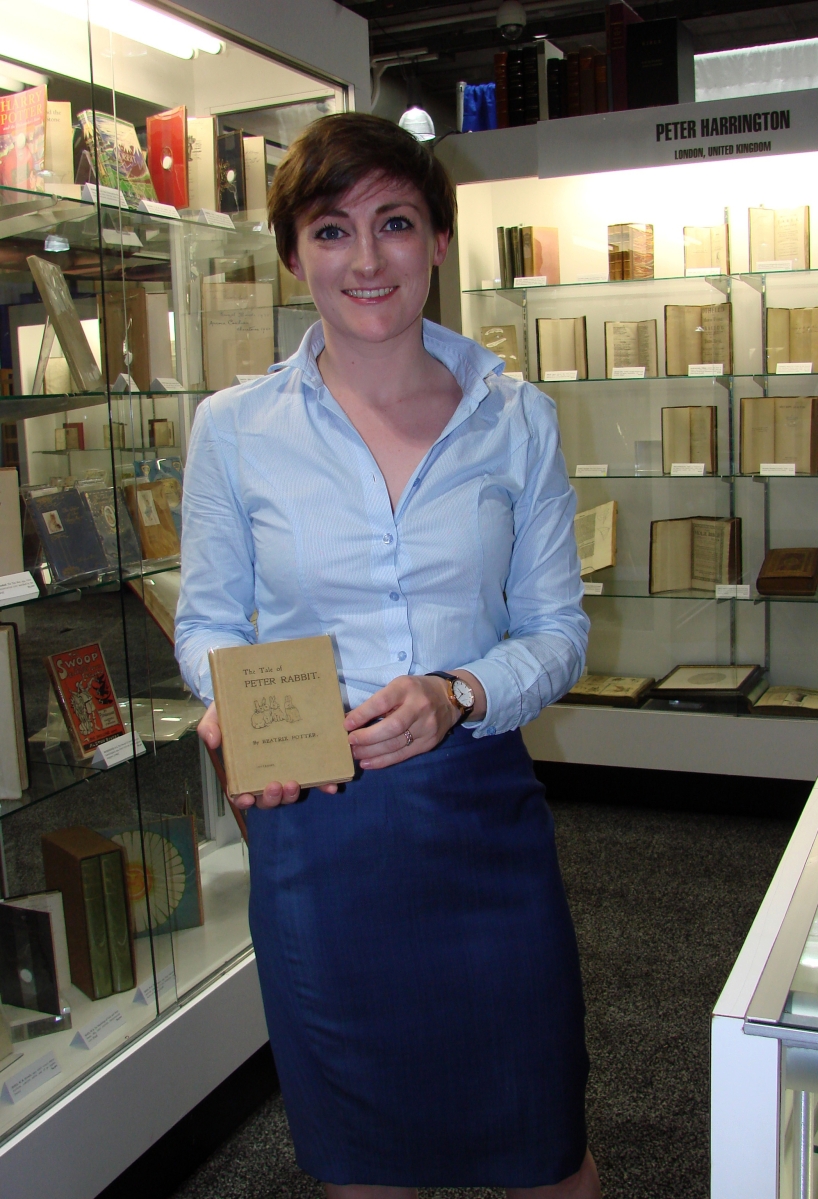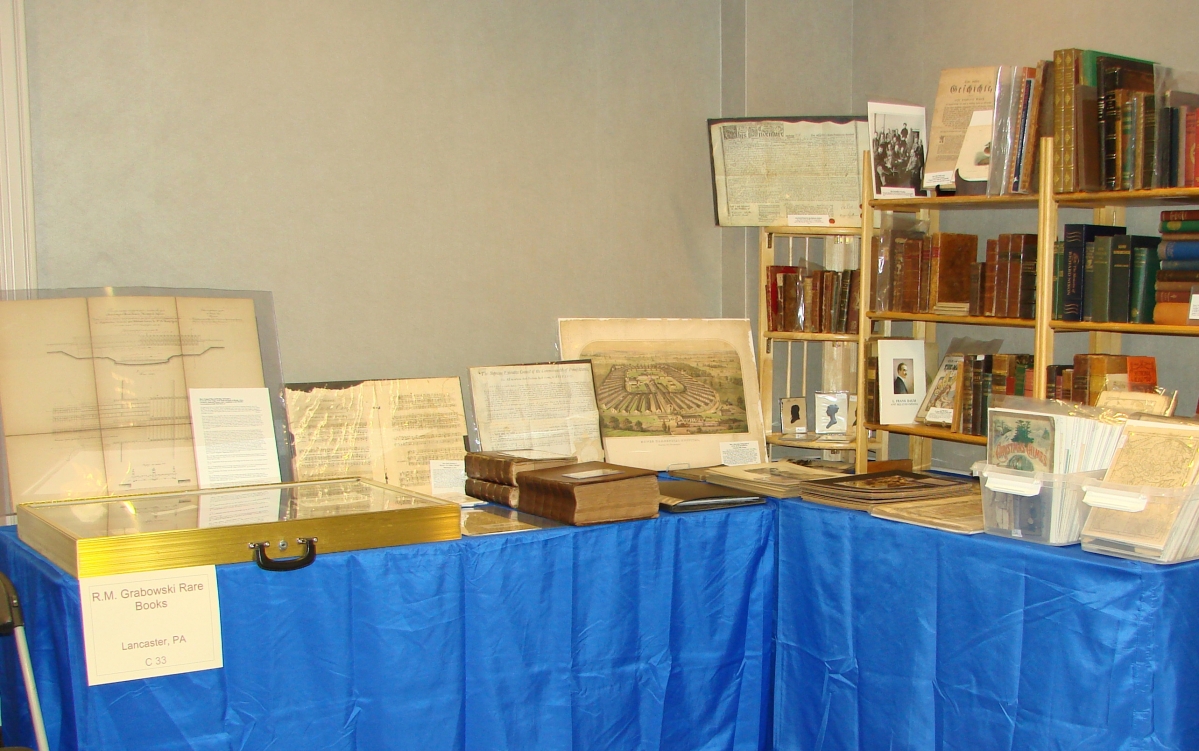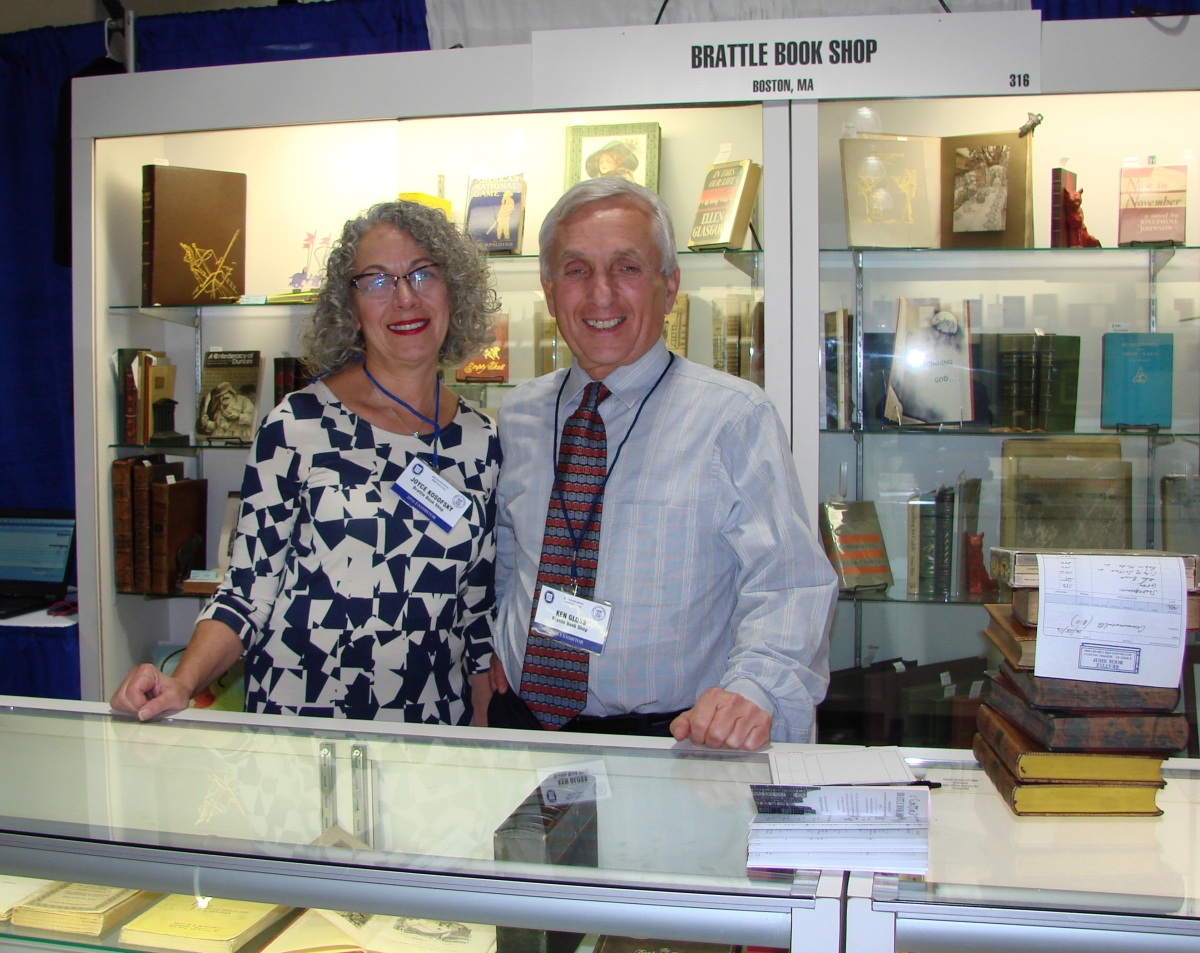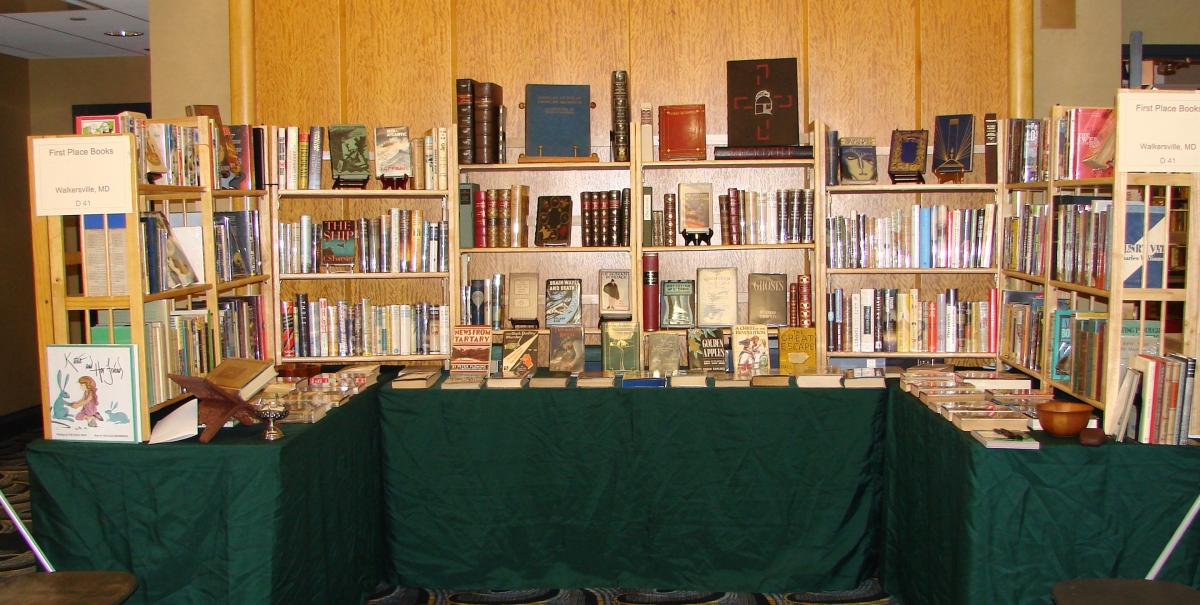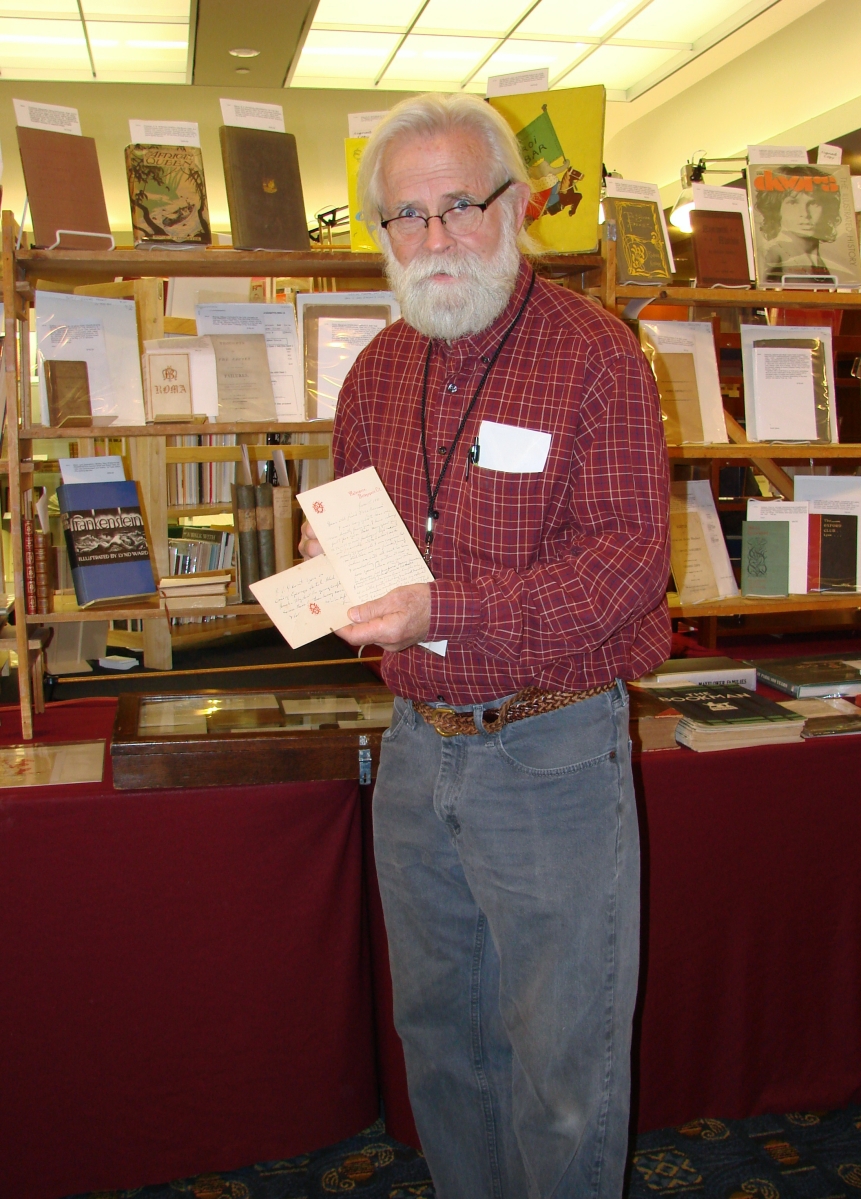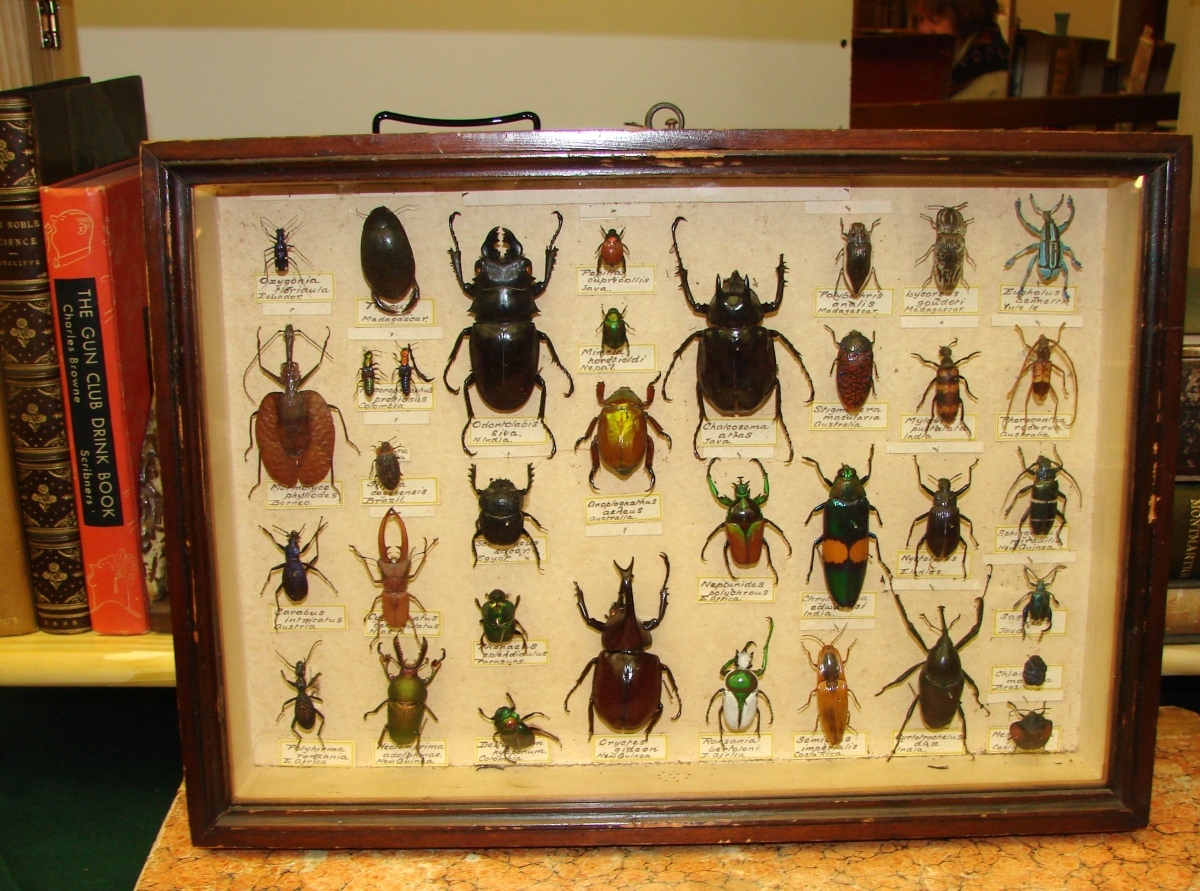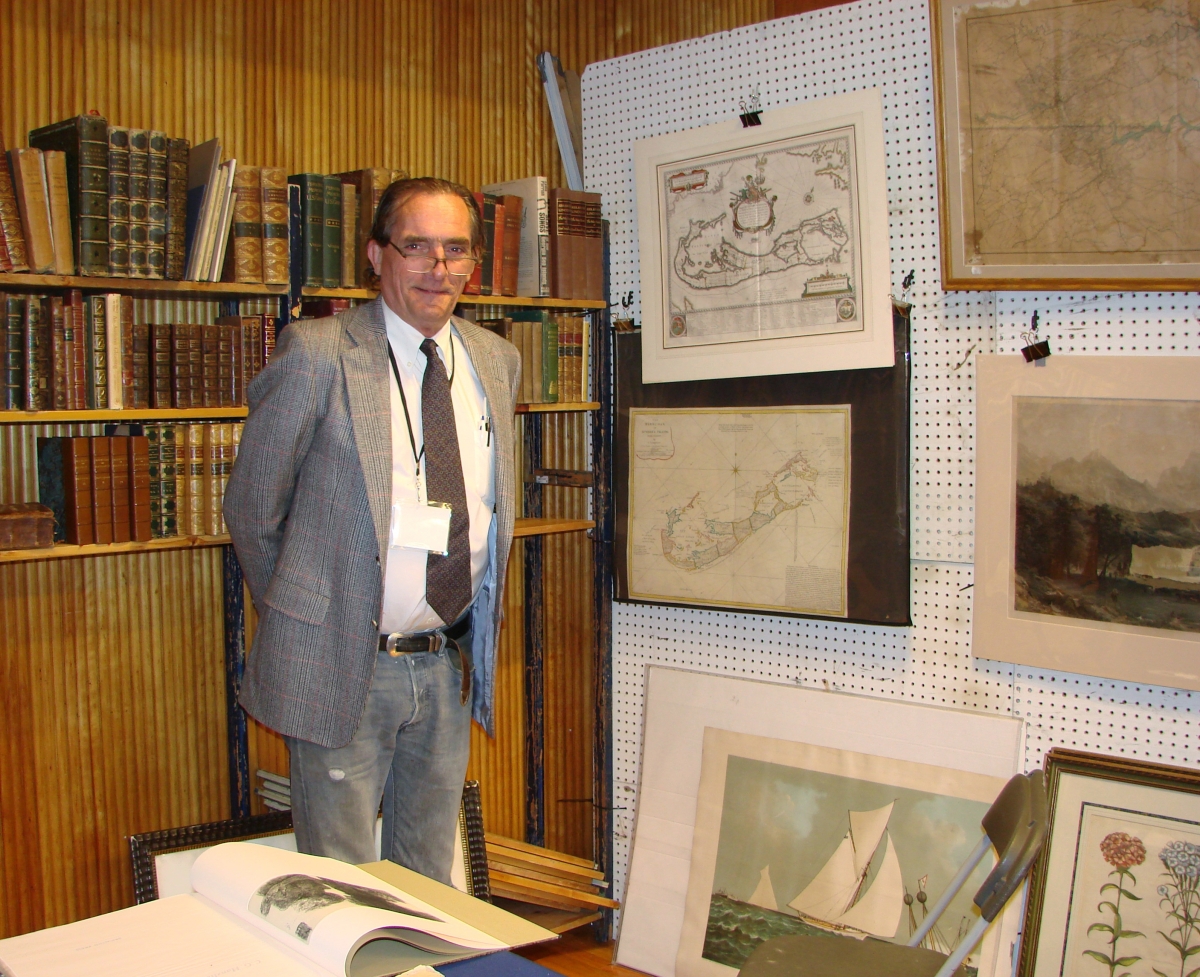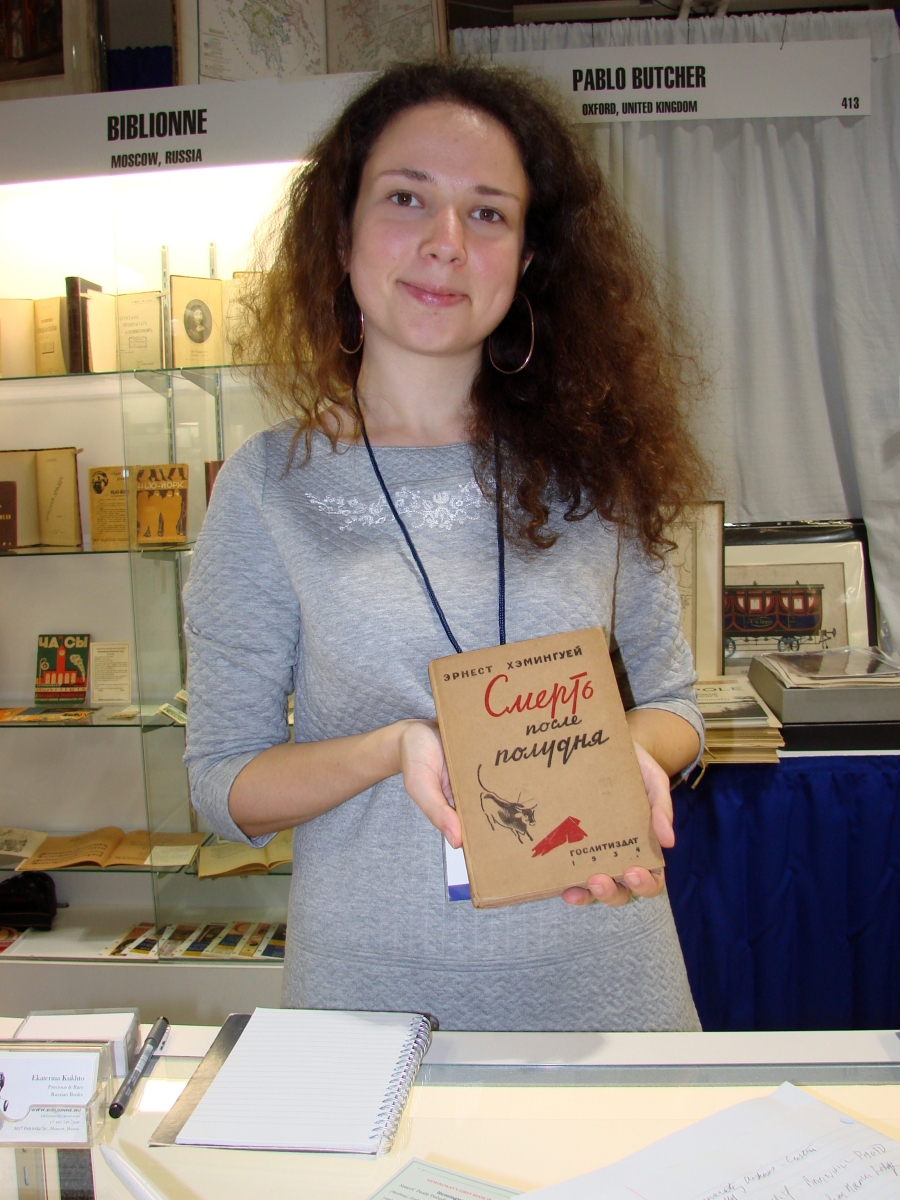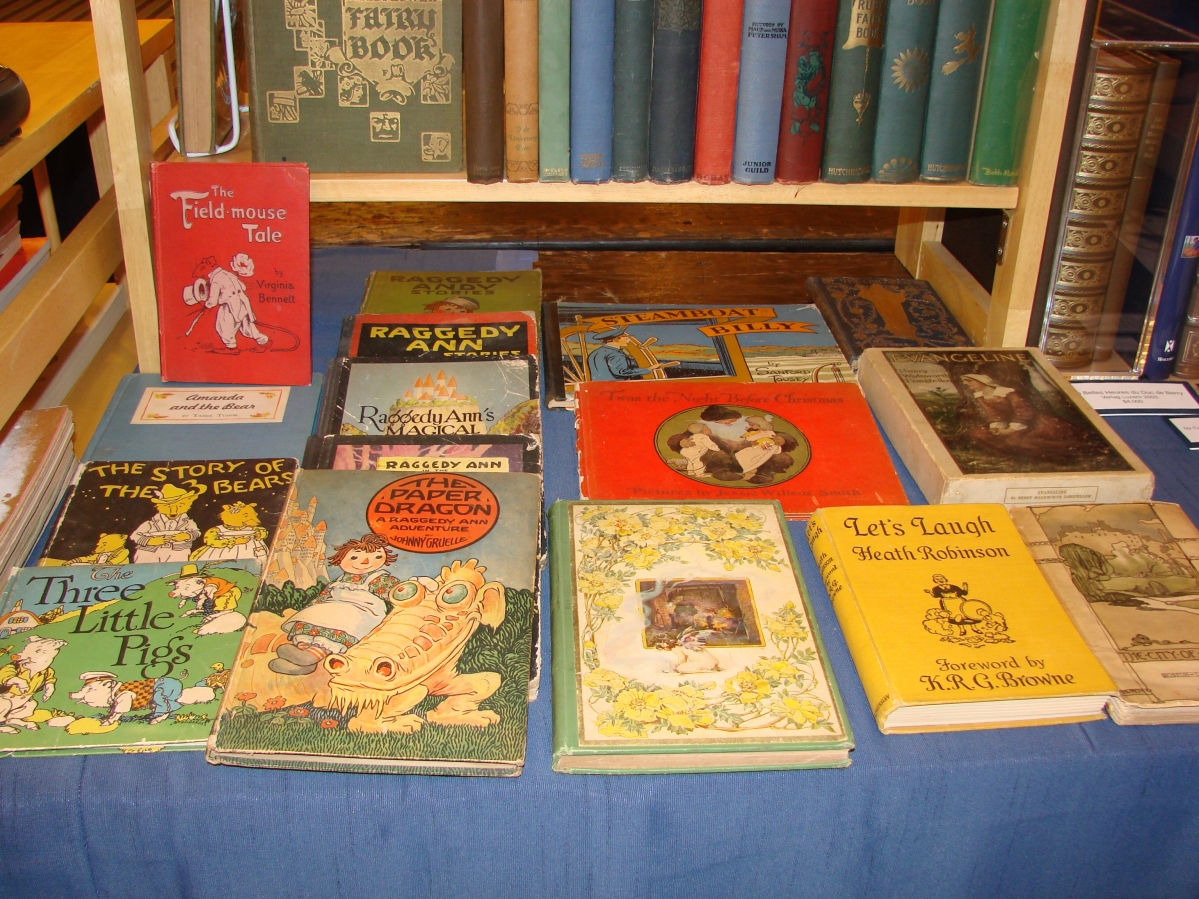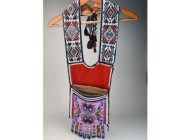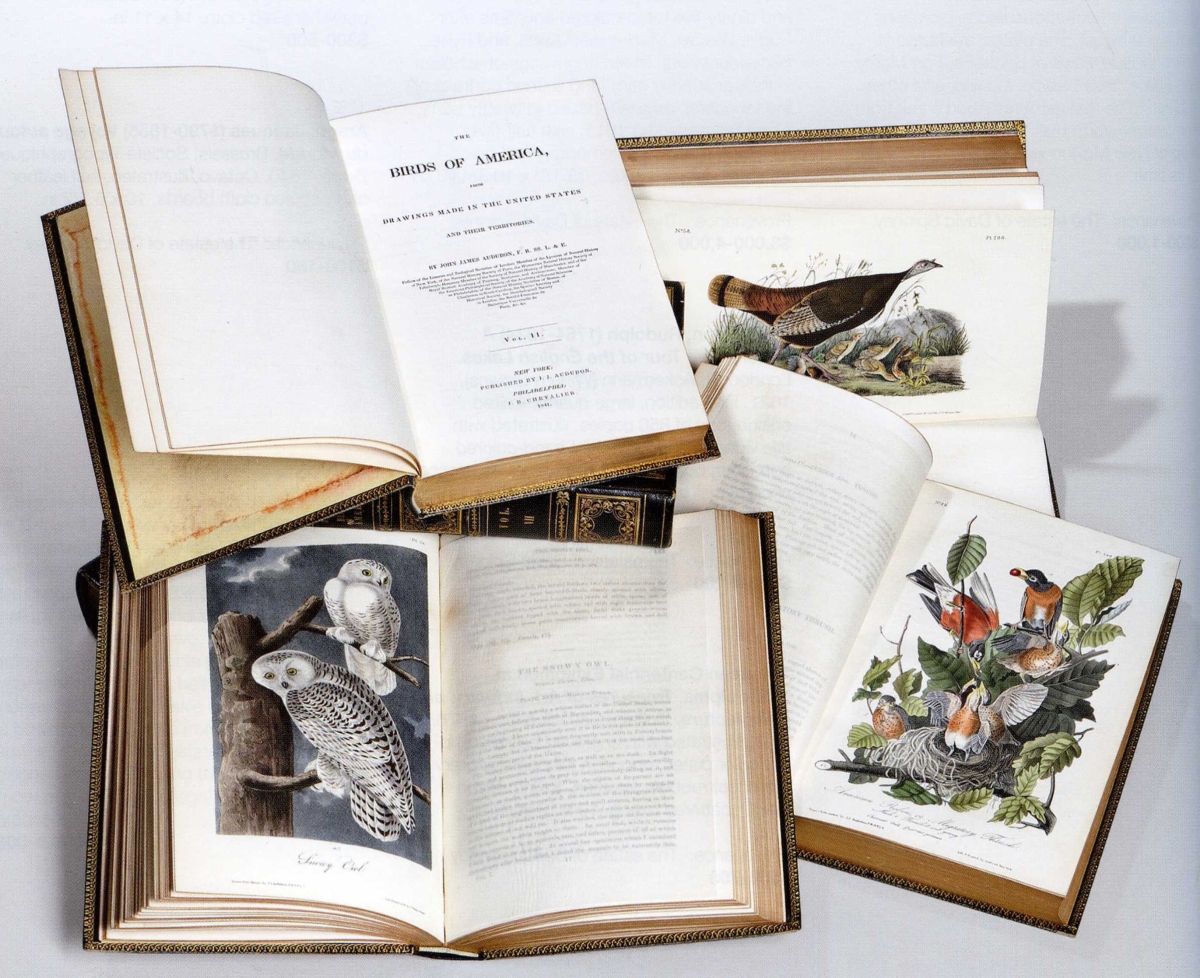
A first edition, seven-volume octavo set of John James Audubon’s Birds of North America, with 500 colored lithographs, realized $46,125. —Skinner
Review and Onsite Photos by Rick Russack, Auction Catalog Photos Courtesy of Skinner
BOSTON, MASS. — There was more than enough to keep a book lover here happy and perhaps make a dent in one’s checkbook during what is termed Boston Rare Book Week, which ran October 28–30 at several downtown venues.
Skinner Inc. conducted a fine books and manuscripts auction that offered 535 lots of books and manuscripts, including a significant collection of George Washington material, in a sale that grossed $1,476,000. The Boston International Antiquarian Book Fair ran for three days and lived up to its billing, with 120 exhibitors, including several from European countries such as England, France and Russia. Marvin Getman’s one-day Boston Book, Print and Ephemera show presented another 65 dealers. Within walking distance of each event, the Boston Public Library mounted a feature exhibit marking the 400th anniversary of William Shakespeare’s death and legacy with “Shakespeare Unauthorized.” It included rare first and early editions of familiar plays like A Midsummer Night’s Dream, Hamlet, and The Merchant of Venice, as well as all four Shakespearean folios, including the library’s own copy of the first folio, published in 1623.
Skinner’s Books And Manuscripts Auction
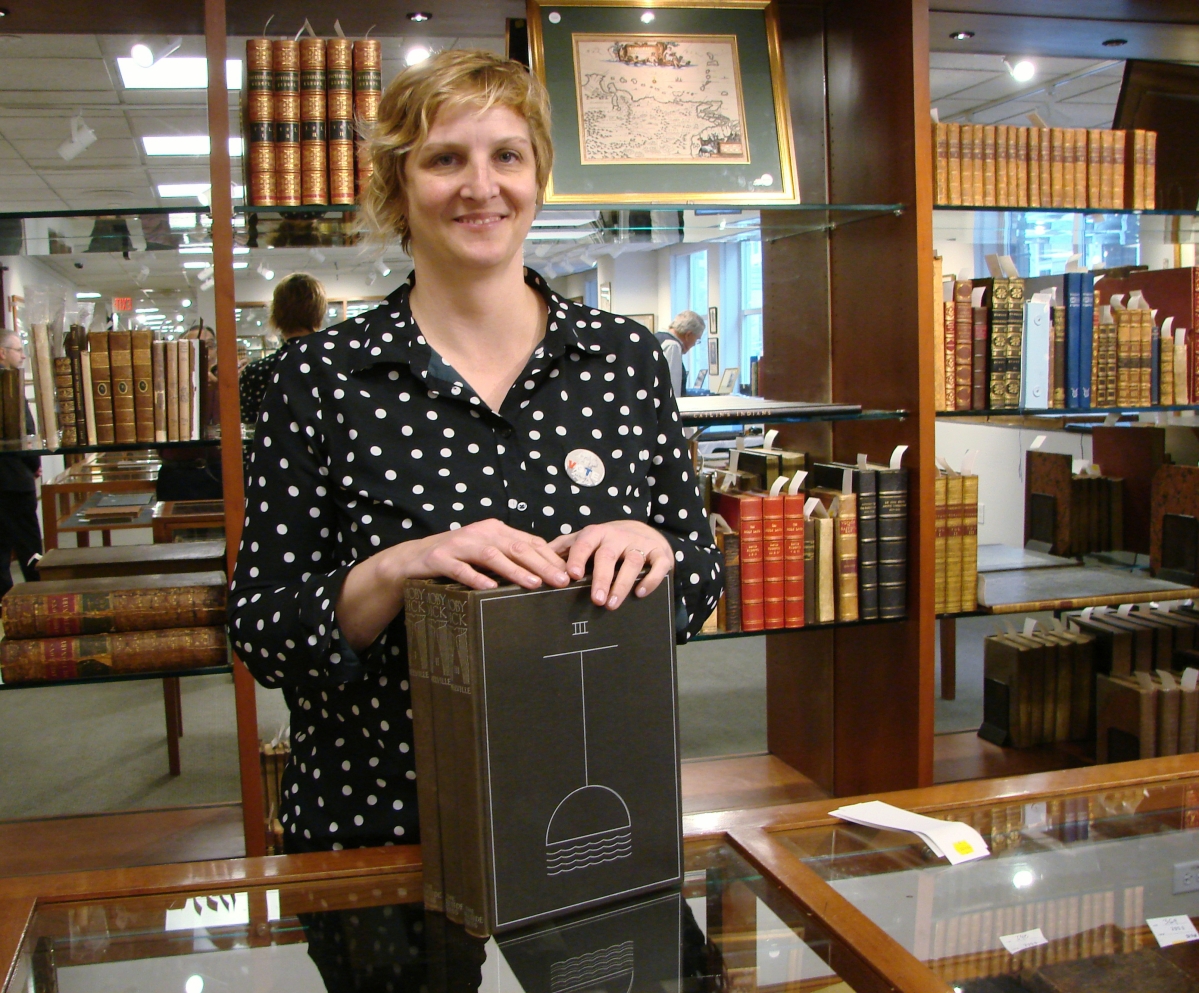
Devon Eastland, director of Skinner’s rare books and manuscripts department, with her favorite set of books in the sale, a three-volume set of Herman Melville’s Moby Dick, illustrated by Rockwell Kent. —Skinner
Skinner’s October 30 sale included a separately cataloged group of 41 lots of manuscripts, books and prints related to George Washington, with all the letters and documents selling. All were from the collection of the late David Spinney, a Chicago collector with a deep interest in American history and Western exploration. The first lot of the Washington material was a manuscript survey map and description of a 437-acre piece of land in Augusta County, Va. It was dated 1751 and sold for $31,980. Washington began working as a surveyor’s assistant in 1748, at the age of 16, but examples of his surveys are not common.
This group also included a letter in Washington’s hand, detailing a contract with James Donaldson, who was supervising carpentry work at Mount Vernon. It was signed by both Washington and Donaldson and specifies the terms of his employment, his food allowance, states he would have the use of a house on the estate, and that he was to “instruct” negro carpenters belonging to the estate, if he used any. It sold for $22,140. Catalogs of good book auctions, like this one, are quite informative. They very often print the full text of letters and documents and often provide historical context for items.
Leading the sale was Henry James Warre’s Sketches in North America and the Oregon Territory, with 16 hand colored plates and one map. Published in 1848, Warre had been sent by England to attempt to help resolve a boundary dispute concerning Oregon and this volume was the report on his exploration. By the time he returned to England, the boundary dispute had been settled but Warre retained the rights to publish his findings and illustrations. The illustrations were issued both uncolored, or colored, as in this copy, which realized $65,190.
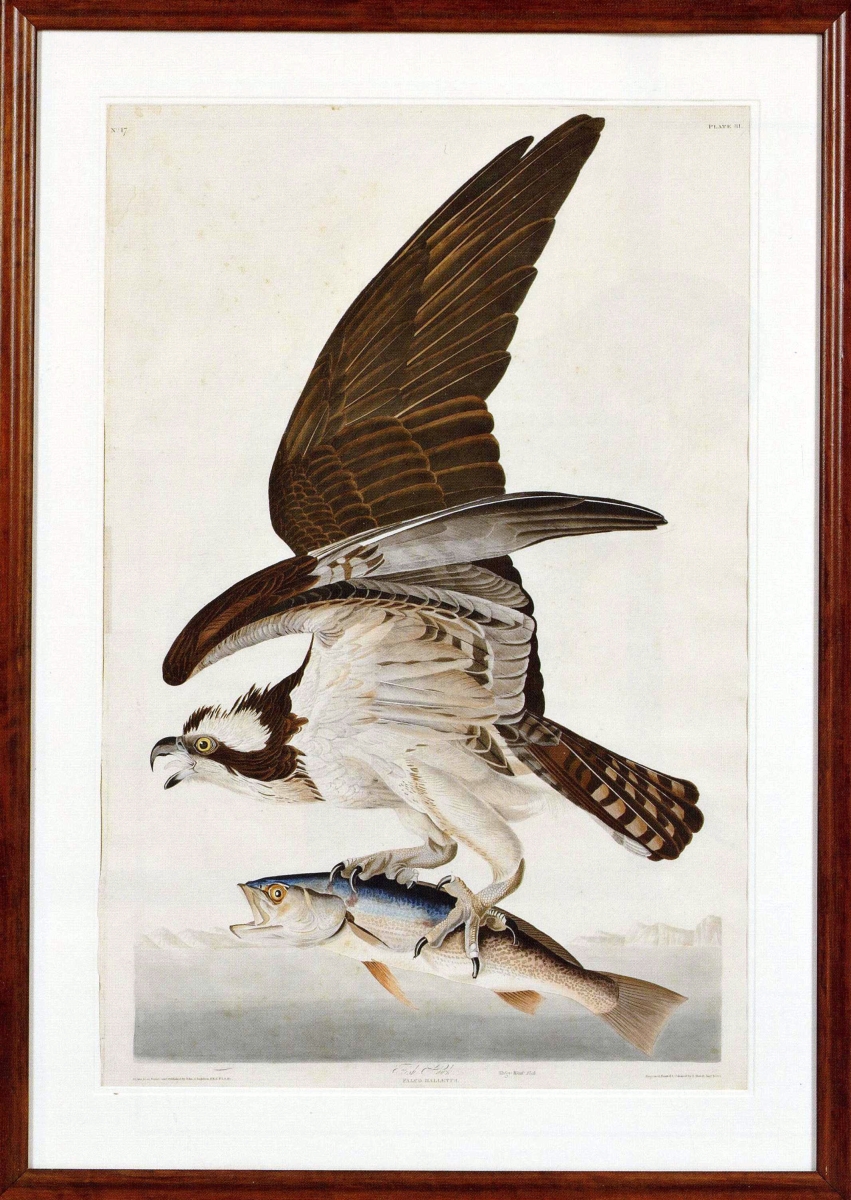
Several elephant folio first edition Audubon prints were sold. “The Fish Hawk” was a hand-colored engraving, plate 81, from the Birds of America and it was the highest priced of the group, finishing at $43,050. —Skinner
The auction also included an important, unpublished manuscript regarding the Custer massacre at Little Big Horn. Written by General John Gibbon, one of Custer’s superior officers who was involved with the planning of the attack, the 19-page document, which earned $18,450, said that Custer did not follow orders. A manuscript letter that Custer wrote while a student at West Point, earned $4,920. All were from the Spinney collection. The sale included letters and documents written and signed by several presidents: John Quincy Adams, Calvin Coolidge, Ulysses Grant, Thomas Jefferson, Abraham Lincoln, John Kennedy and more.
Devon Eastland is Skinner’s book and manuscript department director. For more than 20 years, Eastland operated a retail bookstore in Harvard Square in Cambridge that specialized in books printed before 1700. “In my junior year at Harvard, I wandered into one of the several bookstores near the university. I was amazed that one could see and handle books of that age. And I was amazed that for a couple of hundred dollars, I could own books that were over 300 years old. I was hooked.”
“I went back to Harvard and checked to see what sort of courses they offered about rare books and found several. I took all that I could and I took other courses at the Rare Book School, which is now based at the University of Virginia. About five years ago, I joined Skinner as the department head. We’re a small department and I work with consignors to decide how we can help them, and I do all the cataloging for these sales. I really enjoy that because I’m constantly learning.” After the sale, she said, “We are quite pleased with the sale. All the Washington letters sold. Attendance was good, and many of the dealers exhibiting at the book fair were here for the preview and bidding either by phone or through left bids.”
For additional information, www.skinnerinc.com or contact Eastland at 508-970-3293.
Boston International Antiquarian Book Fair
The 40th anniversary edition of the Boston International Antiquarian Book Fair opened October 28 at the Hynes Convention Center. The 120 exhibitors displayed some of the finest rare books as well as historical and literary manuscripts and ephemera in a variety of categories. More than 15 exhibitors attended from England, and there were exhibitors from Germany, France, the Netherlands, Denmark, Spain and Russia. Prices ranged from $35 for a first edition of Harper Lee’s recent novel Go Set A Watchman to more than $100,000 for building blocks played with by Albert Einstein.
Brattle Book Shop, Boston, sold a 1915 program and scorecard for the 1915 World Series between the Boston Red Sox and the Philadelphia Phillies. It was Babe Ruth’s first World Series, and it was priced at $5,000. Several booths offered children’s books. Peter Harrington Rare Books, London, had an inscribed, first edition of Beatrix Potter’s first book, The Tale of Peter Rabbit. When Potter tried to interest publishers in her book, which was illustrated with 42 pen and ink drawings, none were willing to publish it. Potter had 250 copies printed at her own expense, and they were given to friends and family, including Arthur Conan Doyle. Eventually, Frederick Warne & Co, a publisher that had initially refused the book, persuaded Potter to make some changes, including redoing the illustrations in color, and published the book in 1902. The rest is history, with more than 45 million copies of the Peter Rabbit books having been sold. Harrington priced its inscribed copy at $44,000.
One of the international exhibitors represented here was Biblionne, hailing from Moscow, Russia. Many of the books it had at the show were Russian editions of books well known in the West. The first Russian edition of an H.G. Wells title, War of the Worlds, published in Moscow in 1898, was priced at $4,500; the first Russian edition of F. Scott Fitzgerald’s The Great Gatsby, published in 1965, was priced at $850. A pamphlet about the Russian tour of My Fair Lady, which visited Moscow, Leningrad and Kiev in 1960, was priced at $250. In 1941, Uncle Tom’s Cabin was translated and published in Moscow and Leningrad, illustrated by prominent Russian artist Vladimir Bekhteev. A copy was priced here at $350.
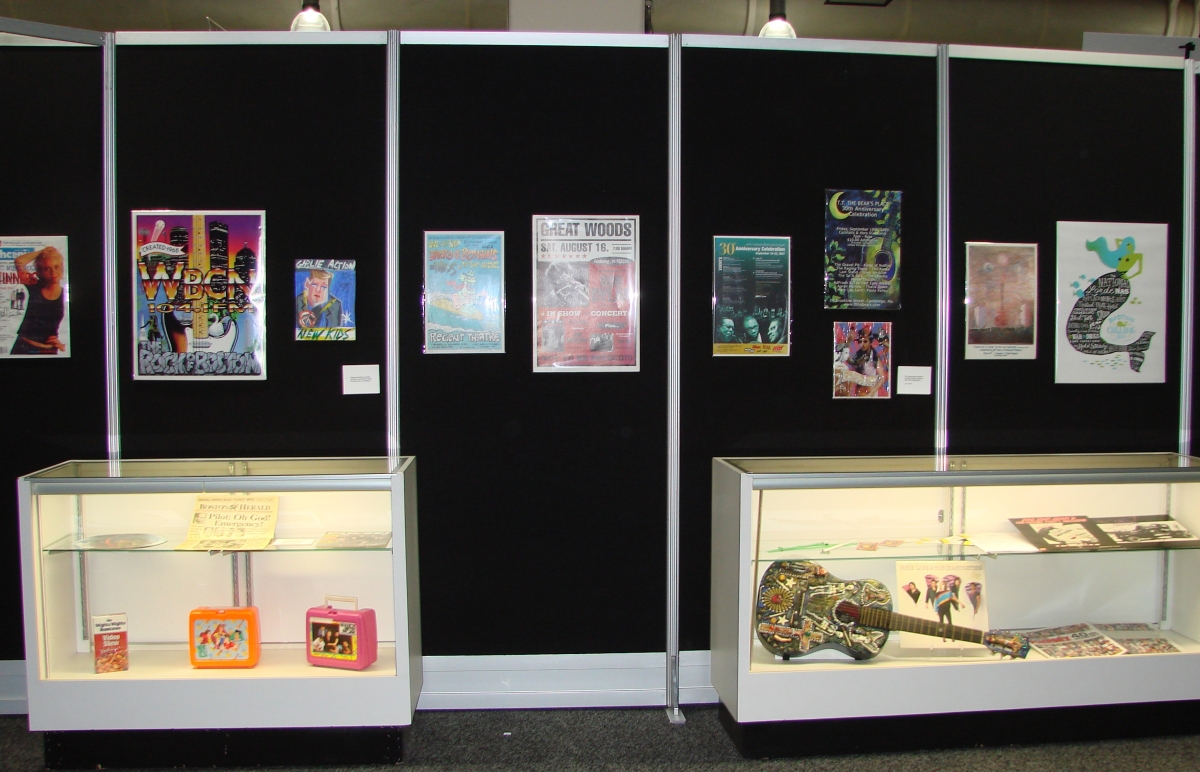
The Boston International Antiquarian Book Fair’s special exhibition, “Collecting The Boston Music Scene,” displayed a portion of the collection of David Bieber, formerly of radio station WBCN. It displayed concert posters, record albums and ephemera covering over 40 years of music history in Boston.
Anna Syrovatkaya, the company’s rare book cataloger, discussed book collecting in that country. “The rare book trade now is more active than any other antique trade in Russia. Russian collectors are interested in several areas, such as classical books from the Nineteenth–Twentieth Centuries, illustrated and fine press editions, signed and inscribed copies, important documents from the Twentieth Century, children’s books and travel. Business is good and we have just opened an auction house in Moscow.” Anna studied the antiquarian book trade at the Moscow University of Printing Art, and then “I worked at Moskva, the largest bookstore in Moscow. Someday I hope I will have my own bookstore full of rare and interesting books.”
Ken Gloss, proprietor of the Brattle Book Shop in Boston, which proclaims itself as one of the oldest and largest bookstores in the country, is an Antiques Roadshow appraiser, past president of the Antiquarian Booksellers Association of America’s New England chapter and chairman of the Boston Antiquarian Book Fair.
“Like the antiques business, the book business was hit by the general economic slowdown. The top end of the market, again like the antiques business, has recovered nicely. Rare books today are selling where they used to and the best of the best are bringing prices we haven’t seen before. The middle of the market is weak but our shop is able to do very well with the very inexpensive books. That’s because of our real estate situation. We own our building (in downtown Boston) and we own the vacant lot next to it. We use that lot for the $5 and under books, and the heavy foot traffic by the store brings buyers for those books. Many book dealers are not as fortunate as we are with the real estate. Those who have to deal with escalating rents can’t do what we can.”
Gloss made an interesting observation on the business today. “It’s like there are two totally different parts of the business. People aren’t buying many books that provide information, like books on art, or architecture, or gardening or the how-to books. The internet has hurt that part of the market. Much of that information is available free on sites like YouTube but those who are buying the book as an object itself, because it’s a first or exceptional edition, or by a favorite author, or a favorite subject, like children’s books, are very active. Those books move quickly.”
Gloss also talked about what booksellers are doing to interest new collectors. For the first time, the Boston Book Fair offered free admission on Saturday and Sunday, charging only for the Friday night preview. “We also distributed hundreds of free passes at the Boston Book Festival in Copley Square a couple of weeks ago. That’s a well-organized family event and draws a crowd that a formal book fair like this doesn’t. We have an educational exhibit this year, ‘Collecting the Boston Music Scene.’ We hope that will bring in more younger people. We’ve encouraged our exhibitors to bring special books that we call ‘Discovery.’ These are books of interest priced under $100, and the participating exhibitors have special signs in their booths indicating they are participating. And we have a number of free talks scheduled throughout the weekend.”
For additional information, www.bostonbookfair.com or 617-266-6540.
Boston Book, Print And Ephemera Show
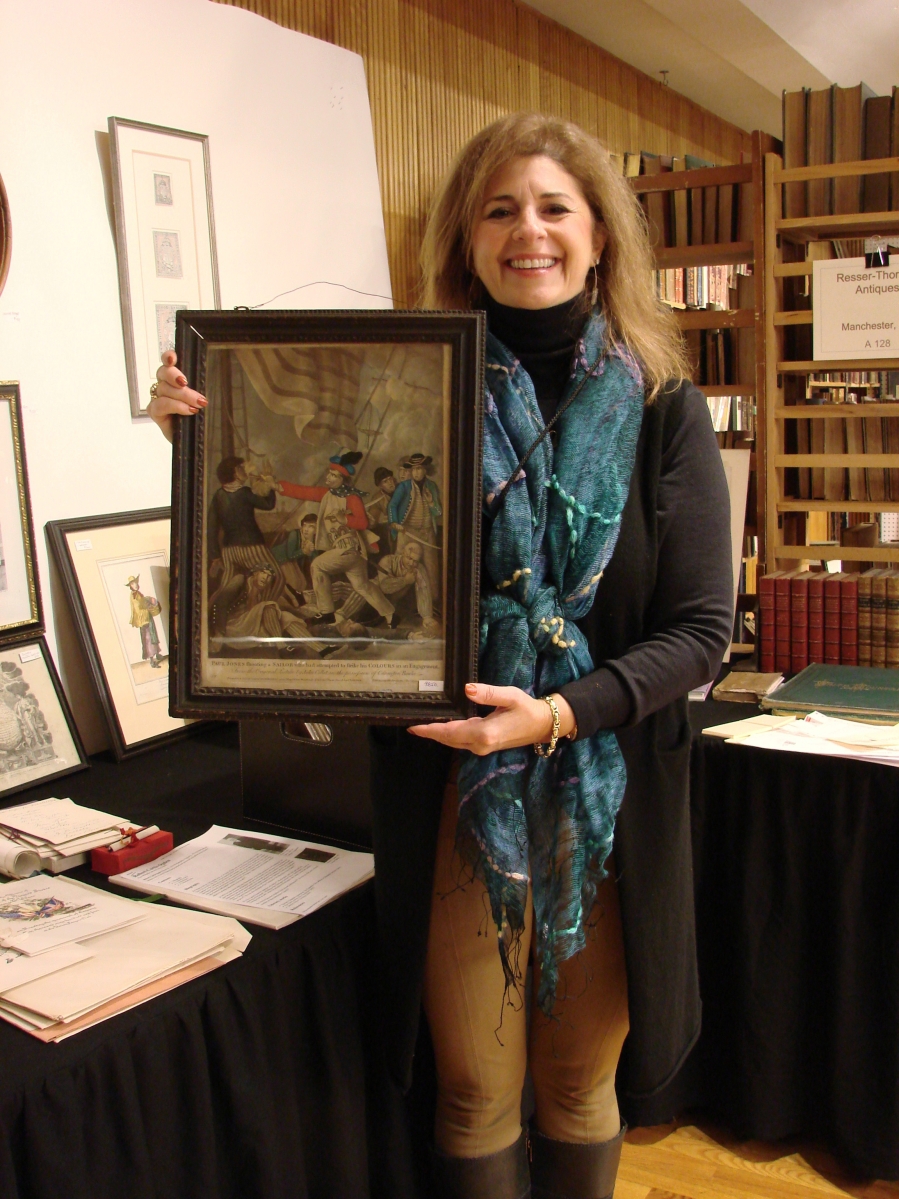
Ann and Richard Thorner, Manchester, N.H., deal in historical prints and ephemera. Ann is holding an important print, published in London in 1779, depicting John Paul Jones shooting a sailor. They had bought it at Northeast Auctions earlier in the week and priced it here at $9,850.
—Boston Book, Print and Ephemera Show
Marvin Getman, who produced the Boston Book, Print and Ephemera show at the Back Bay Events Center October 29, works hard to attract new collectors. Besides giving out many freebie tickets, he actively promotes his shows on social media. Opening at 8 am on Saturday, the show was scheduled to make it convenient for exhibitors from the Boston International Antiquarian Book Fair to shop here, which they do. There is a long line before the show opens and dealers are making sales within a few minutes of the opening.
The mix of dealers differs slightly from the other book fair, with several dealers offering ephemera and photographica, along with first editions, children’s books, manuscripts, etc. A Thousand Words, Exeter, N.H., featured early editions of the Raggedy Ann books, priced at under $50 and Grabowski Rare Books, Lancaster, Penn., offered two signed Grandma Moses Christmas cards for $425, along with an early bible printed by Isaiah Thomas, founder of the American Antiquarian Society, priced at $1,450.
Several dealers reported brisk sales. New Yorker Emil Allakhverdov sold an original Russian lithograph postcard by Kazimir Malevich for $1,600, while Richard Mori, Milford, N.H., sold a 1628 handwritten journal by a minister from Matlock Bath, England. With 122 pages and a table of contents, it covered such subjects as demonology and witchcraft. Kurt Sanftleben, Read’Em Again Books, Montclair, Va., sold a photo album of a 1921 cross country automobile trip for $2,500.
Peter Luke, New Baltimore, N.Y., deals in wide variety of ephemera and does numerous shows around the country. He started out doing bottle shows in 1980 and gave up his full-time job in 1995 to concentrate on ephemera. “Certain categories — stuff on patent medicines, New England material before 1800, things relating to Western and Southern states — do well. People want unique things like photo albums, diaries and certain store ledgers. Things that were personal, not mass produced. Broadsides do well for me and so do circus and theatrical things. In general, business gets better year to year, but like anything else, there are trends that you have to pay attention to as tastes change.”
For additional information, www.neantiqueshows.com or 781-862-4039.
Shakespeare Unauthorized
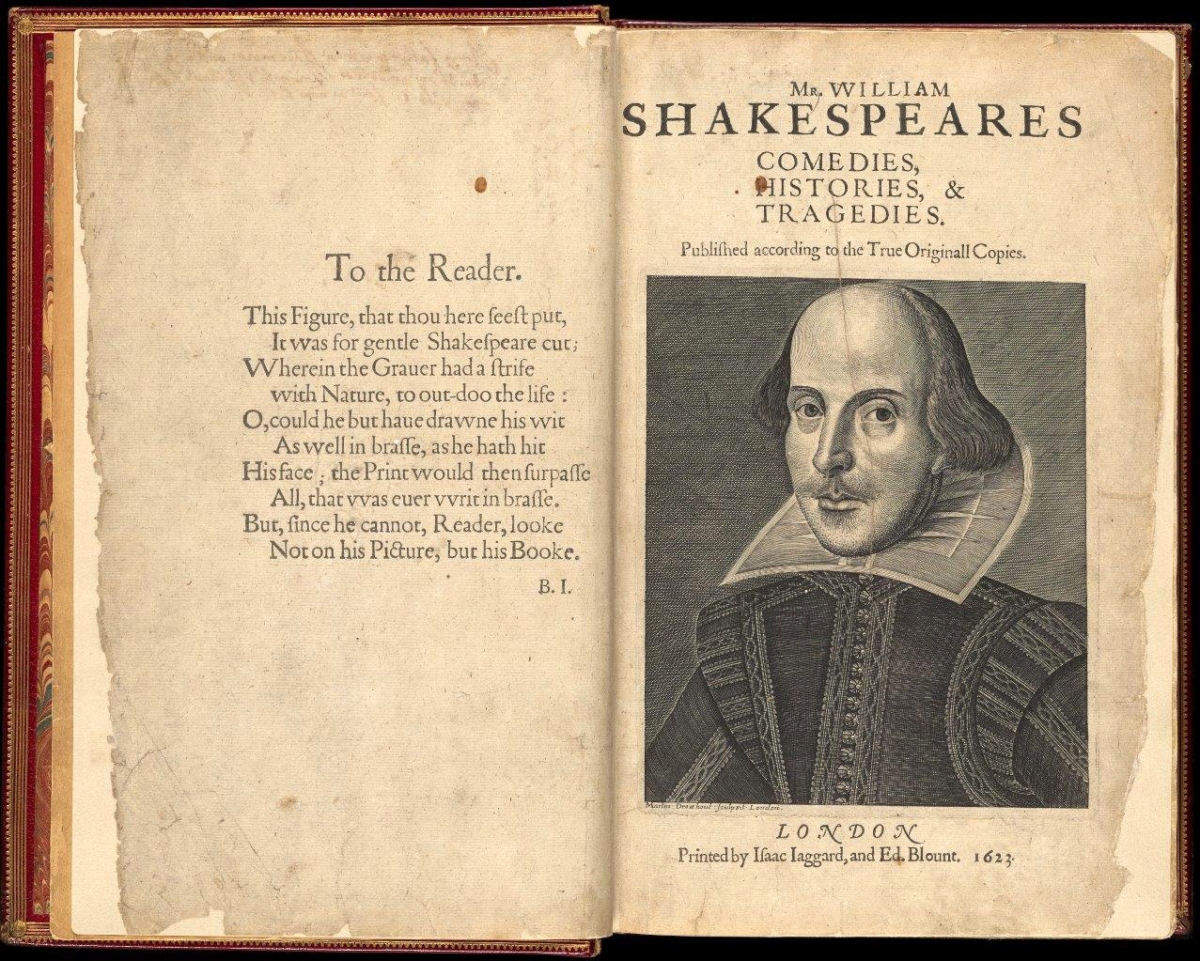
“Shakespeare Unauthorized” runs at the Copley Square branch of the Boston Public Library through March 31. Dozens of original, and early editions, of works like this rare 1623 volume of Shakespeare’s plays, known as the “First Folio,” are on display.
The Boston Public Library’s Shakespeare exhibition, on view in its central library location in Copley Square, runs through March 31. “‘Shakespeare Unauthorized’ pulls back the curtain on 400 years of collaboration, confusion and even literary deception that surround the plays, poems and life of William Shakespeare,” according to the library. “Through the pages of these precious books, visitors can experience Shakespeare in his original language and spelling, just as he would have been read by book lovers and theatergoers hundreds of years ago.”
The exhibition is in the central library’s McKim Exhibition Hall, 700 Boylston Street. For information, www.bpl.org or 617-536-5400.

